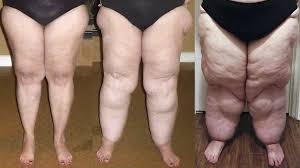Source: news-medical.net
Suppose you’re a teen or young woman who starts putting on fat, mainly in your legs. Doctors say you’re obese – but no matter how much you diet and exercise, you can’t lose the fat. After years of weight gain, pain, and swelling, you’re finally diagnosed with lipedema – a common but “enigmatic” disease of the peripheral fat. That’s the experience of women with lipedema surveyed in the December issue of Plastic and Reconstructive Surgery , the official medical journal of the American Society of Plastic Surgeons (ASPS).
To gain insights into this misunderstood condition, Anna-Theresa Bauer, MD, of Technical University Munich, Germany, and colleagues, surveyed 209 women with lipedema who were treated with liposuction. Lipedema is a congenital disease, causing disproportionate accumulations of fat, most often in the legs.
Occurring almost exclusively in women, lipedema is usually misdiagnosed as obesity – but the abnormal fat deposits don’t respond to diet or exercise. In addition to cosmetic concerns, the fat accumulations cause pain, easy bruising, and progressive swelling. Lipedema seems to run in families, as most patients have affected relatives.
The women in the survey averaged 38 years of age. However, most noticed the first signs of lipedema in their teens or young adult years: average time to diagnosis was 15 years. “Frequently, lipedema patients go through a long period of uncertainty and self-doubt, before their disease is finally properly diagnosed,” Dr. Bauer and coauthors write. “They are helpless against their weight gain and their pain and also the social withdrawal they often experience.”
Most of the women had other health problems besides lipedema, most commonly an underactive thyroid gland. Other common problems included depression and migraine headaches. But the patients had low rates of common obesity-related conditions, including high blood pressure, high cholesterol, and diabetes.
The patients underwent multiple sessions of liposuction to treat the abnormal fat deposits, most commonly in the thighs, calves, buttocks, back, and abdomen. The average amount of “pure fat” removed by liposuction was 10 liters, but was much higher in some patients.
In nearly all of the women, liposuction led to decreased pain, bruising, and swelling. Other benefits were also apparent, including reduced frequency and severity of migraine attacks. “Liposuction yields long-lasting positive effect in lipedema patients, leading to a marked increase in their quality of life,” Dr. Bauer and coauthors write.
The authors note some important limitations of their patient survey study. However, it adds to a growing body of evidence supporting the benefits of liposuction in reducing symptoms and improving quality of life for women with lipedema. The findings may also provide new clues into the causes of lipedema – particularly hormonal factors. Dr. Bauer and colleagues emphasize the need for further, in-depth studies to gain a clearer picture of the “physiological mechanisms underlying this progressive disease.”
